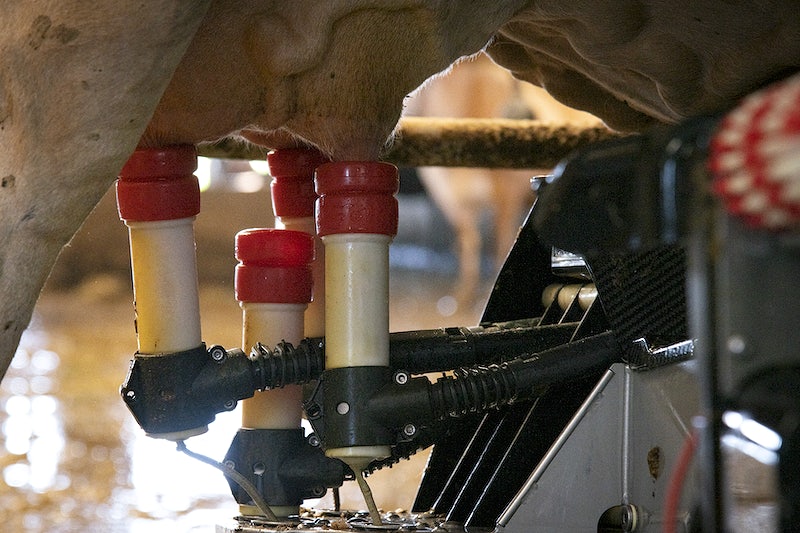
Lucas LoBreglio
Farm 2 Facts is based in Madison, Wisconsin, a forefront for world-class food research as well as the nation’s dairy industry. As of 2017, over 43% of the state’s agricultural revenue (7% of its total revenue) was generated by dairy, which continues to thrive despite a downtick in demand during the coronavirus pandemic. Yet, a number of demographic shifts in the industry have posed problems for the smaller producers that often populate our local farmers markets. If you’re interested in the sociology behind your dinner plate, here’s some food for thought:
The dairy workforce is rapidly shrinking as the total number of dairy farms declines every year, especially here in Wisconsin. Over the past couple decades, the average age of dairy farmers has climbed due to mean family size decreasing and more young folks seeking off-farm careers. Now, the dairy industry heavily relies on immigrants, who are more willing than U.S. citizens to do the tough jobs that it requires. Many ethical issues have been raised by combining this work with a largely-undocumented workforce (low wages, dangerous working conditions, limited access to workplace protections, etc.). But now even the immigrant labor pool is drying up, for reasons not yet fully understood.
With inflation hitting consumers hard and the number of dairy farms decreasing, there is a major drive to develop solutions to this labor shortage. Congress has expressed bipartisan interest in policies like the Farm Workforce Modernization Act, which would increase visa access for seasonal workers particularly in the dairy industry (it recently passed in the House and stalled in the Senate). Hopefully this signals a growing awareness and sympathy towards immigrant workers, who underpin our food economies by doing tough jobs that many of us would refuse. Meanwhile, emerging automated and AI technologies have proven to increase milk production and help farmers better care for their cows’ health, showing potential to soothe work shortages.

Make no mistake: the dairy industry is doing great on paper. Americans love their milk and cheese (especially here in the dairy state!), and there hasn’t been much difficulty getting it to market. It’s just that the industry is being consolidated among fewer and larger producers: the US has lost over half of its dairy herds since 2003, while increasing herd sizes keep the total amount of cattle in the country constant.
Smaller and less resilient producers are left with some pressing questions. Will increased visa access for undocumented workers fix the agricultural labor shortage? Are we really doing enough to shield them from precarious work environments? How will automation continue to impact the dairy workforce? As producers grapple with these questions, how can we protect small farmers and rural economies in this get-big-or-get-out industry?
The declining dairy workforce is just one of many novel agricultural issues brought by the 21st century. As landowners and legislators look for solutions, farmers markets allow us to keep our fingers on the pulse, whether we’re chatting with farmers about their work or giving market managers the tools to collect demographic data in different agricultural sectors. To get a glimpse into life and economics on a farm, you just have to look locally!
